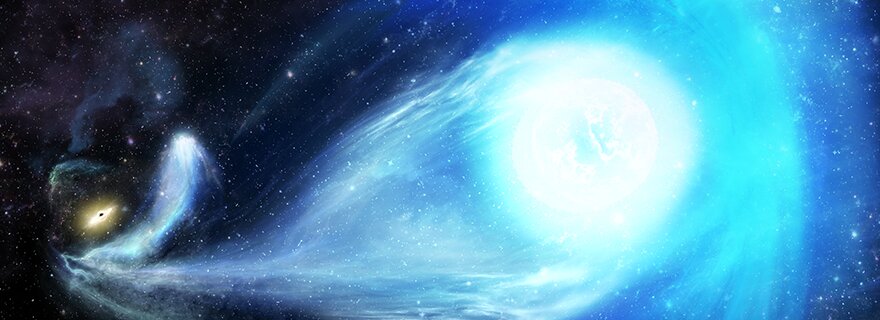Scientists are studying hypervelocity stars — amazing luminaries moving at speeds of hundreds and thousands of kilometers per second. Scientists hope that they will help to understand the secrets of such phenomena as supernova explosions and supermassive black holes.

Hypervelocity stars
Astrophysicist Fraser Evans studies hypervelocity stars. The first of these amazing luminaries called S5-HVS1 was discovered in 2019. Then it turned out that its speed is 1755 km/s, that is, a little more than half a percent of the speed of light.
Since then, astronomers have found several dozen more similar objects. They suspect that there are about a thousand in the Milky Way. However, regarding these stars, it is rather true that they are now in the region of our Galaxy.
After all, the speeds of these stars are so great that the force of gravity is simply not able to keep them within our star system. They will definitely leave it after a while. And it was this process that Evans tried to model. The scientist conducted millions of simulations of how these luminaries interacted with the rest of the Galaxy.
Black holes and Supernovae
First of all, the scientist was interested in the question of where hypervelocity stars came from. They definitely originate from our own Galaxy, but only two extreme processes can generate them.
The first is the gravitational influence of the supermassive black hole Sagittarius A*, which is located in the center of the Milky Way. Its gravity can give insane acceleration to objects that are just approaching it.
The second is a supernova explosion. If it occurs in a binary system, then the companion star can receive a giant impulse and turn into a hypervelocity. In any of these cases, by the characteristics of this object, it is possible to learn a lot about the process that gave rise to them.
The fact is that supernovae flare up in our galaxy every few hundred years and it is not so easy to observe them. And the supermassive black hole is largely hidden from us by dust clouds. And hypervelocity stars are relatively easy to observe even with the help of not very powerful telescopes.
According to phys.org
Follow us on Twitter to get the most interesting space news in time
https://twitter.com/ust_magazine
